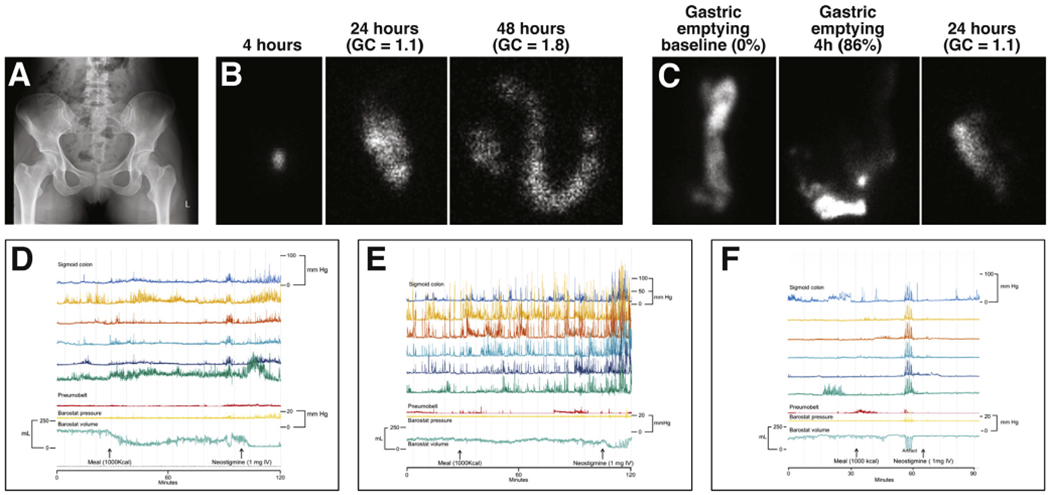Figure 1.

Patterns of colonic motor dysfunctions in patients with CC. The pronounced reduction in sigmoid colonic balloon volume indicates a normal tonic response to a meal (D) in a patient with excess colonic stool burden (A). Anorectal tests (not shown) identified a DD. During scintigraphy, colonic transit is usually measured using an isotope111 coated with a pH-sensitive methacrylate that dissolves in the terminal ileum. In (B), the isotope is in an intact capsule (left) observed in the ascending colon at 24 hours (center panel) and then in the transverse colon at 48 hours (right panel). The geometric center (GC), which is the weighted distribution of the isotope throughout the colon, indicates slow colon transit; normal values are 1.4–3.6 at 24 hours and 2.1–4.9 at 48 hours. In this patient, the colonic manometry (E) depicts considerable phasic pressure activity during the fasting period, increased phasic activity after a meal, and more so after intravenous neostigmine. However, the tonic contractile response to the meal was reduced. (C) shows a patient with delayed colonic transit with normal gastric emptying. In this patient, the colonic manometry (F) reveals sparse phasic pressure activity and tonic or phasic contractile responses to a meal.
